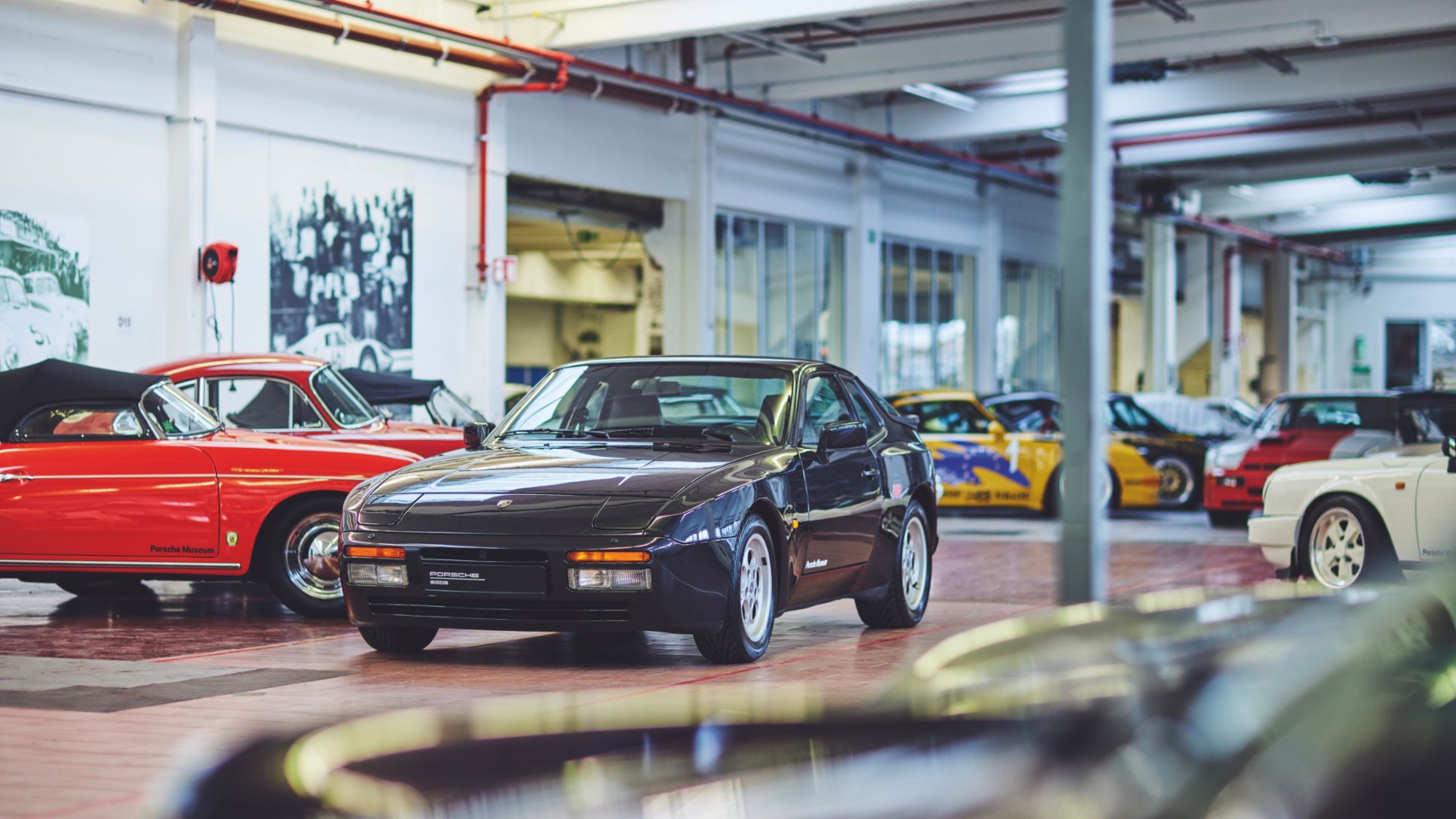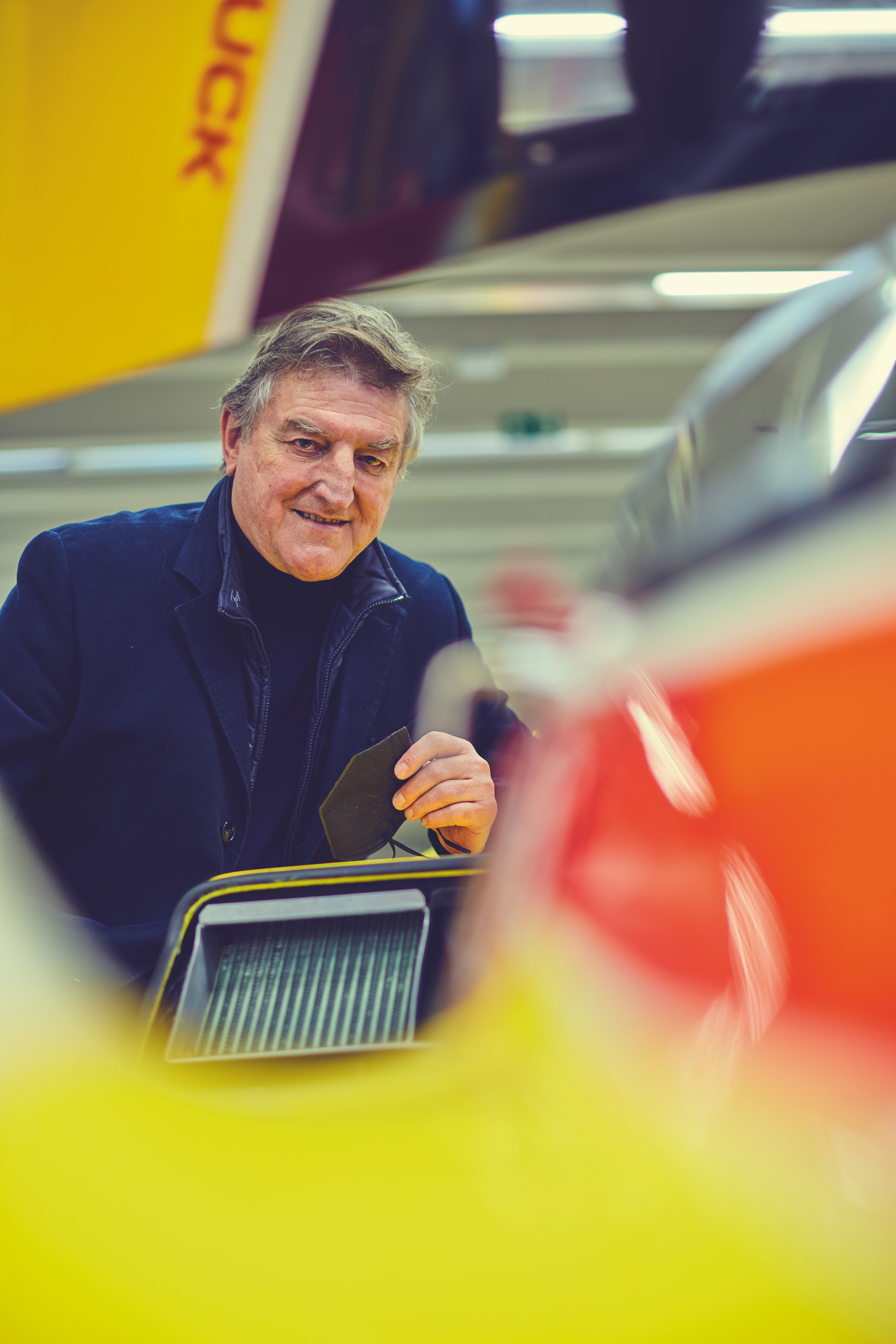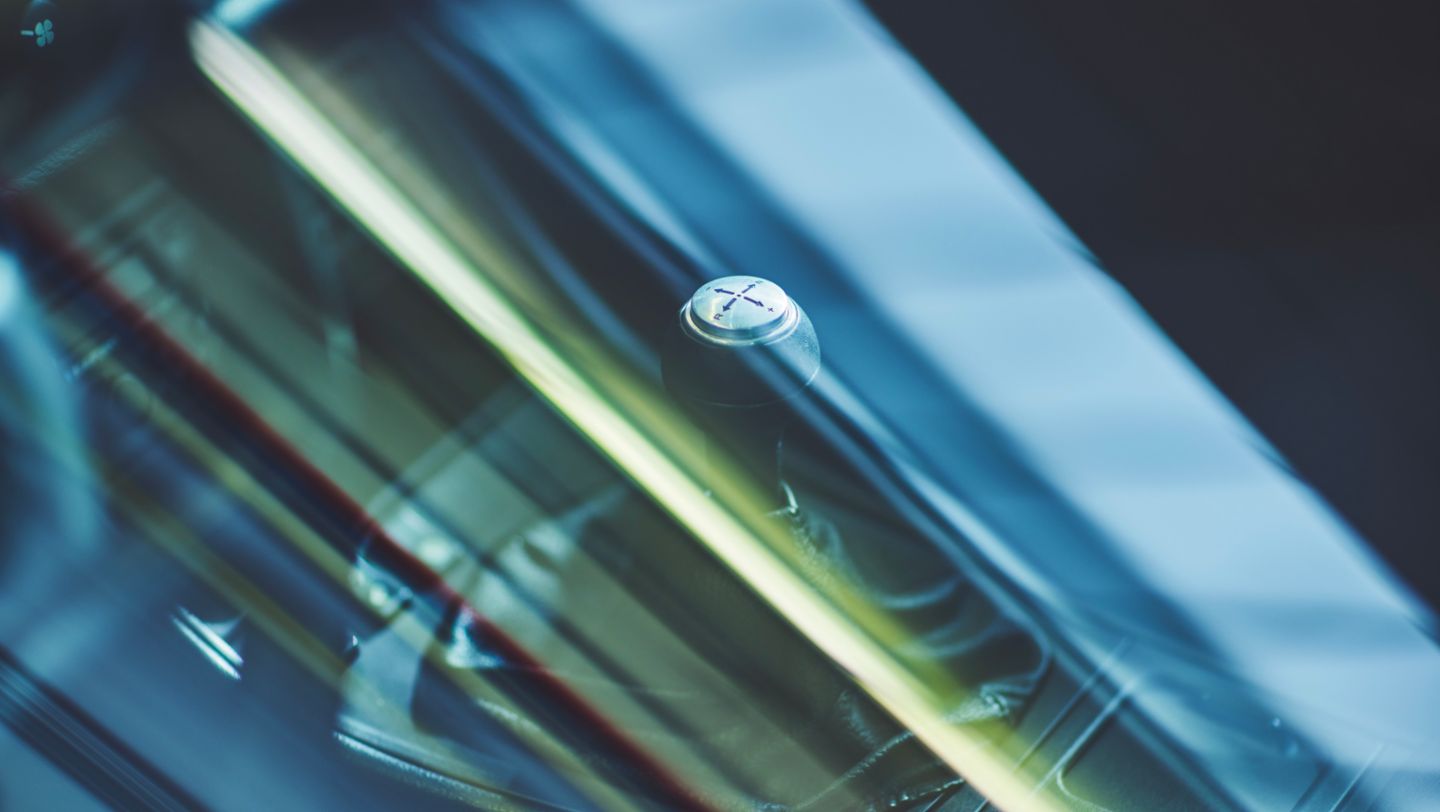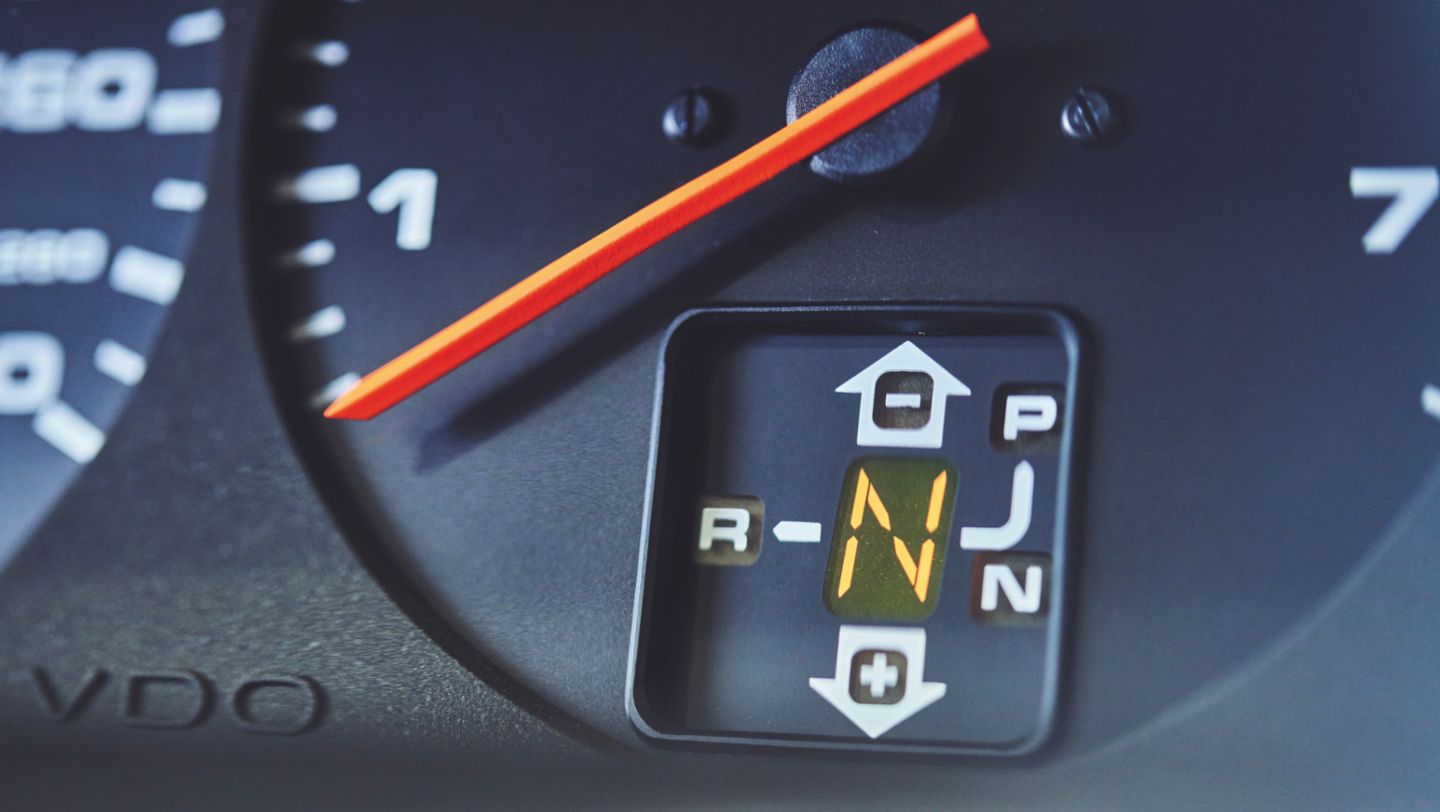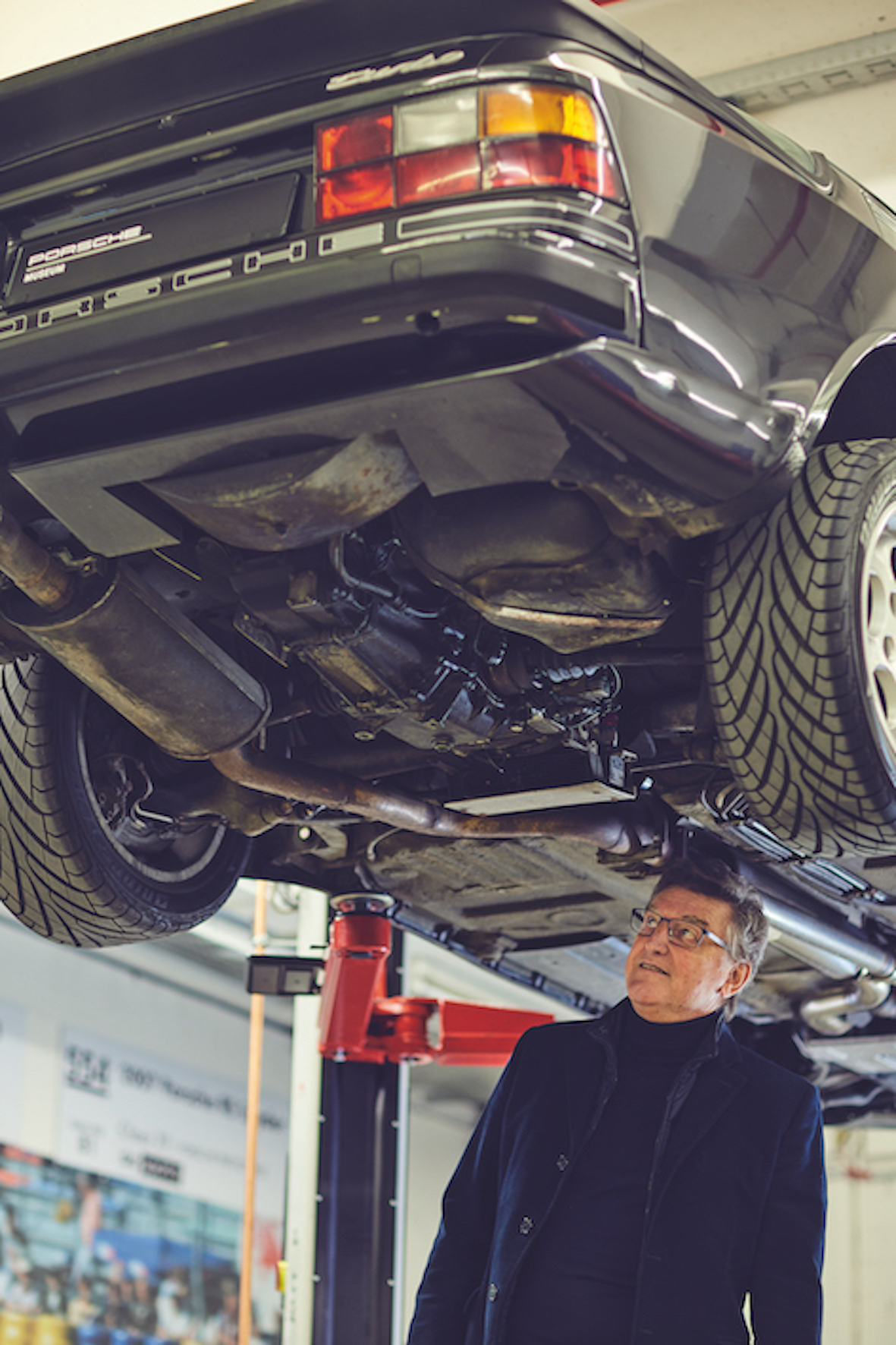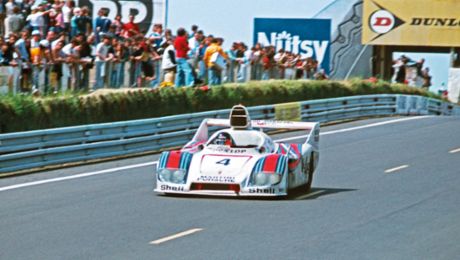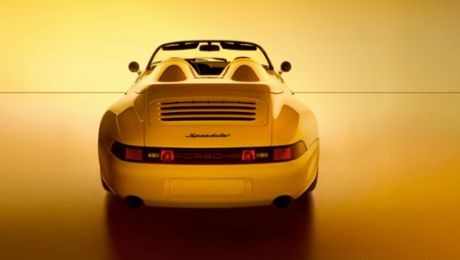Rainer Wüst laughs when he’s asked about the start of this success story. He raises his hand almost apologetically and says: “Well, the level of respect was high, the task enormous. And me, a young pup. It was stressful too. But at the same time it was an amazing opportunity – and looking back, a really great story.” Since 1971, Wüst had worked at Porsche as a transmission test engineer, and 10 years later, not yet 35 years old, he became the Technical Manager responsible for the development of the power-shifting Porsche dual-clutch transmission (PDK).
This was more than four decades ago, and Wüst shakes his head as he recalls the conditions under which a seminal innovation of motorcar development became a reality. “The idea was to combine the best of two worlds – the advantages in the degree of efficiency of a manual transmission and the potential for performance of full automation, which still had many weaknesses at the time. It was a huge challenge for a small department such as ours. Maybe it was naivety that helped us, but certainly our pragmatism in dealing with the challenges did – as well as our passion for this subject.”
Transmission expertise from Porsche
Porsche had already gained expertise in all things relating to the transmission. The development of the Porsche synchromesh had moved the transmission department forward. Now Wüst had a strong interdisciplinary team at his disposal that was highly motivated to take on the challenge of developing a dual-clutch transmission. They were ready – but was it the right time?
Today, Wüst is clear about the answer. But we’ll come to that. Forty years ago, Wüst found old transmission development prototypes from the legendary engineering genius Imre Szodfridt languishing in storage. At the end of the 1960s he had already pitched the idea of a dual-clutch system to the Head of Development at Porsche at the time, Ferdinand Piëch. “Szodfridt was a very clever man, so this preliminary work helped us,” Wüst recalls. What didn’t help was that, at the start of the 1980s, there were neither powerful control electronics nor vehicle-compatible electrohydraulic valves in series production. “We got the Szodfridt transmission from storage and worked with pneumatic valves, which we converted to work hydraulically. It was complicated pioneering work from the ground up, but the result already had pre-series status,” he says.
Wüst is standing beside a 944 Turbo in which the innovative transmission was tested successfully in the 1980s – an historic car with a PDK gear lever in the centre console: in front of it a minus sign to show that you push the lever to shift down, behind it a plus sign to indicate that you pull the lever to shift up. This was all that was necessary for changing gears. It was a spectacular development. Because the gears in the PDK are divided between two sub-transmissions, each with its own clutch and only one of which is ever engaged at any one time, the new gear can already be engaged in the second sub-transmission. Thus, the gear is changed simply by closing the now-active clutch while simultaneously opening the previously active one.
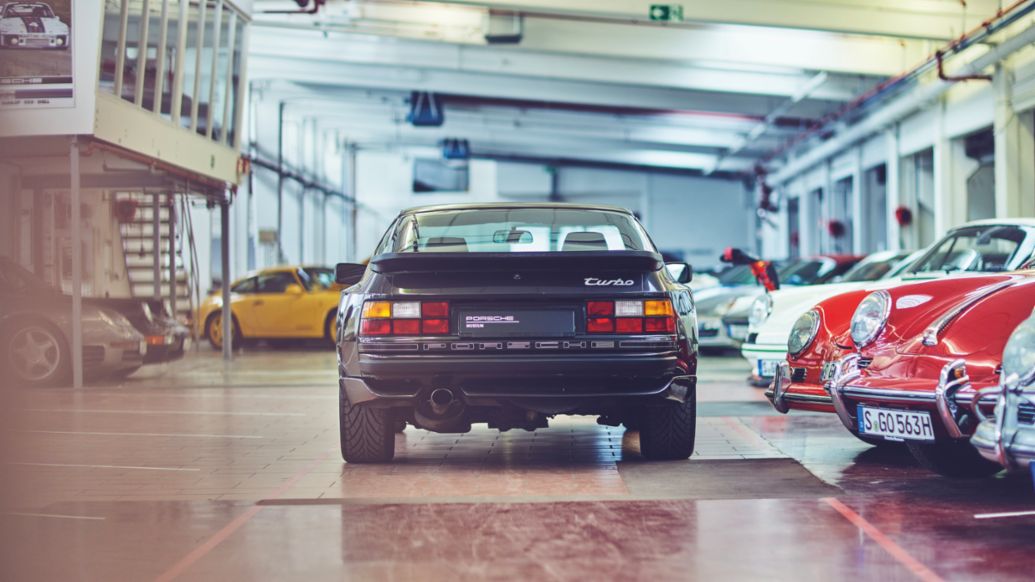
However, for Wüst and his team, the test in the Porsche 944 Turbo was only an intermediate step. His Head of Development at the time, Helmuth Bott, was convinced that everything that could be tested in motorsport should be tested there.
As a result, they decided to put the capabilities of the newly developed PDK to the test on the racetrack with the 956. The technophile racing drivers immediately recognised the enormous potential of the new development. “We were able to change gears and drive significantly faster without interrupting the engine’s drive,” remembers Hans-Joachim Stuck, who according to Wüst had the idea of putting gearshifters on the steering wheel – a ground-breaking suggestion that later became reality. “Being able to keep my hands on the steering wheel when changing gears at full throttle felt great right from the start,” says Stuck.
Advantages of the PDK
The advantage of not having to reach for the gear lever during a powerful lateral acceleration when cornering was important, as was being able to drive significantly faster, reaching a higher top speed at the end of the straight due to the uninterrupted power delivery. But the PDK also provided other benefits, too. “Jacky Ickx quickly learned to brake with his left foot when cornering and accelerate with his right to keep the turbo going,” Wüst recalls. “This made him significantly faster coming out of a corner.” It was also no longer possible to miss gears, and the drivers were able to brake later before corners because the PDK shifted down well.
“But there was still a problem,” notes Wüst. During each shifting process, the PDK gave the racing car a kick forwards. The system’s clutch control wasn’t entirely perfected yet, and the transition between gear ratios was accompanied by a hefty jerk. Wüst and his team used the forces from the gear change to push the car forward every time a gear shift happened. As a result, something that disturbed passengers' comfort in a series production car translated into a welcome increase in speed in motorsport. “However, these jerks put great stress on the transmission – and the entire driveshaft. On a few occasions, this excess torque sent everything flying around us, and I sat at home in the evenings and nearly gave up on the whole thing,” Wüst remembers.
They then reduced the inertia of the transmission and got back on track. Stuck tested the new development in the 962, the first racing car with PDK – and in 1986 tasted victory for the first time with Derek Bell in the 360-kilometre race at Monza. The two went on to win the 1986 World Sports-Prototype Championship.
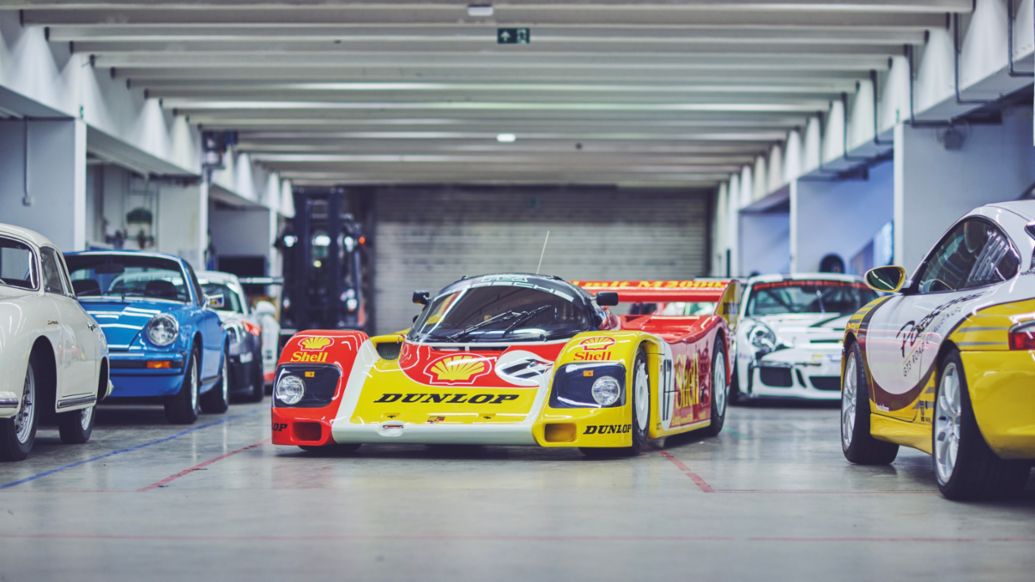
The PDK was also a success in rallying. The Audi Sport-Quattro S1 with PDK driven by Walter Röhrl took first place in the Semperit-Rallye at the end of 1985, in what was its first outing. Here, the many gear changes made the advantages of being able to shift under full power especially noticeable. However, success in racing didn’t lead to a breakthrough in series production. The time really hadn’t come yet. “We were at least 20 years ahead of our time,” says Wüst. Along with the development of valves and electronics, which were not sufficiently advanced for series production, the conditions were not in place yet for the deployment of the necessary wet clutch.
Breakthrough of the PDK
This only changed in the 2000s, when Volkswagen boss Ferdinand Piëch took a greater interest in the PDK and helped it make its breakthrough with the aid of the now-perfected technology. “Piëch never forgot anything,” says Wüst, who had informed Piëch about the PDK work two decades earlier, at the start of the 1980s.
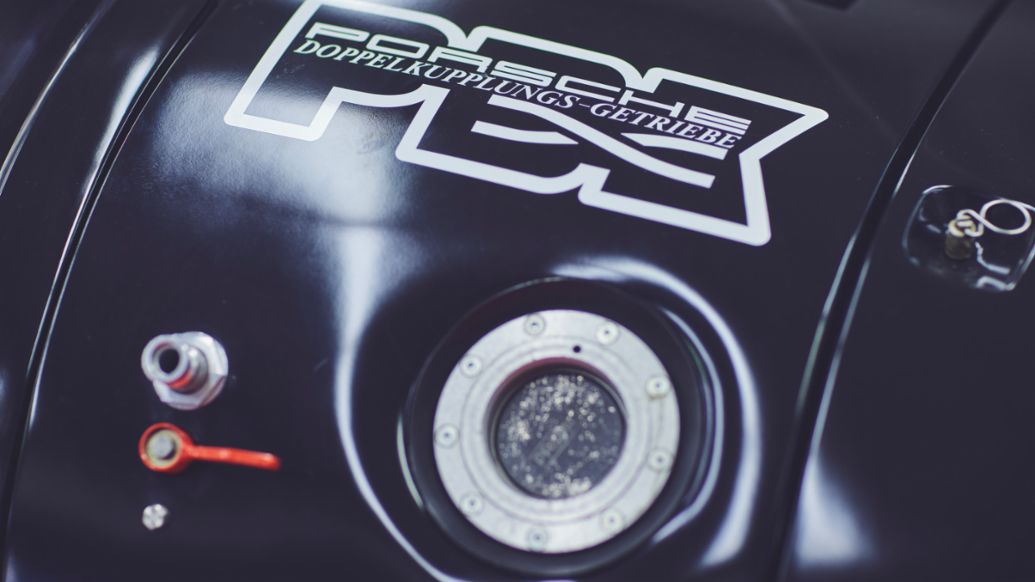
In 2008, Porsche introduced the PDK as an optional extra for the 911 series. One year later, PDK was offered as a variant for the standard drive architecture of the Panamera. As such, it became the first Porsche to be fitted with PDK as standard in some models.
A late success for Wüst, who in the meantime had advanced to Chassis Head of Development. “PDK is definitely a highlight of my 38 years at Porsche. There were many lovely projects, and this was one of the loveliest,” he says. Standing next to the Shell Dunlop Porsche 962 C, he gets almost a little emotional: “A lot of what you work on ends up in the bin. But this is here to stay, I can feel it. This makes me proud. When I see a car with PDK on the road today, I know: a piece of me is inside that. And this is a wonderful development.”
Info
Text first published in the magazine Porsche Klassik 23.
Author: Frieder Pfeiffer
Photographer: Heiko Simayer
Copyright: All images, videos and audio files published in this article are subject to copyright. Reproduction in whole or in part is not permitted without the written consent of Dr. Ing. h.c. F. Porsche AG is not permitted. Please contact newsroom@porsche.com for further information.
